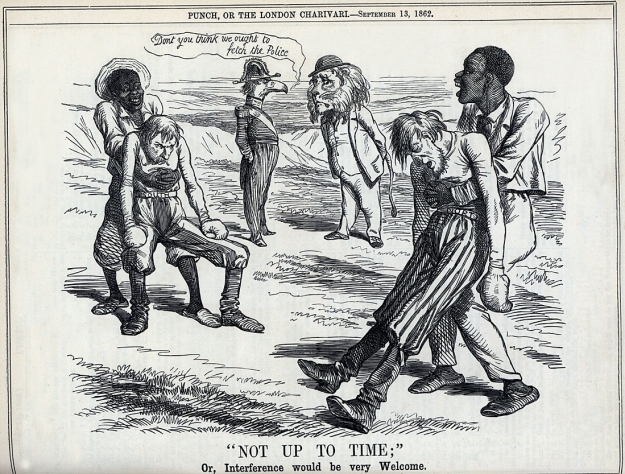War Upon the Land: Military Strategies and the Transformation of Southern Landscapes during the American Civil War by Lisa M. Brady. University of Georgia Press, 2012. Cloth, ISBN: 0820342491 $24.95.
 Lisa Brady could have opened her book with a relevant might-have-been story. Fort Pickens in Pensacola nearly trumped Fort Sumter as the birthplace of the Civil War. Washington simultaneously dispatched reinforcements to the two installations to ward off Confederate takeovers. An Atlantic gale delayed the convoys and at the same time foiled Confederate plans to attack Fort Pickens. By the time reinforcements arrived at Pensacola, violating a truce between the two sides, Union forces had already surrendered Fort Sumter to the Confederates. If not for the interference of nature, history books might talk about a different spark that ignited conflict between the North and South.
Lisa Brady could have opened her book with a relevant might-have-been story. Fort Pickens in Pensacola nearly trumped Fort Sumter as the birthplace of the Civil War. Washington simultaneously dispatched reinforcements to the two installations to ward off Confederate takeovers. An Atlantic gale delayed the convoys and at the same time foiled Confederate plans to attack Fort Pickens. By the time reinforcements arrived at Pensacola, violating a truce between the two sides, Union forces had already surrendered Fort Sumter to the Confederates. If not for the interference of nature, history books might talk about a different spark that ignited conflict between the North and South.
Brady’s fine book, which launches readers into the Mississippi River campaign rather than one on the Atlantic or Gulf, looks at the role nature played in the Civil War. Her fundamental interest is not the impact war had on the land (although she offers observations in this area) but in nature as historical agent, primarily how the military—primarily the Union military—used nature in its strategies of war. Other historians have done similarly in articles and book chapters, but no one has offered a comprehensive examination of the subject. Brady, associate editor for the journal Environmental History, uses all the conventional documents—newspapers, military dispatches, official and personal letters, journals and diaries—deployed by Civil War historians. She reads the material with her specialist’s eye, however, trying to grasp not only nature’s complex place in war but how war’s participants understood nature’s place in the conflict. Her agenda is neither to rewrite Civil War history nor to fault scholarly oversight of nature’s agency. Instead, by integrating the “theoretical and methodological approaches of both military and environmental history,” she seeks to “bring important insight to our understanding of the greatest conflict fought on American soil” (8).
Environmental historians might regard Brady’s detail on battlefield maneuvers as a little tedious. She has been careful not to alienate military and Civil War historians. They, in turn, will appreciate her introduction, which summarizes methodologies and objectives of environmental history and defines discipline esotery, such as nature, landscape, and wilderness. Classroom teachers will likely cull fresh material for their lectures, regaling students, for example, with how Union forces looked for expedient victory at Vicksburg by trying to reroute the mighty Mississippi River to leave the Confederate stronghold high and dry.
The assumption that with fortitude and ingenuity humankind could command nature in previously unfathomable ways is a central theme in Brady’s book. By the mid-nineteenth century, Americans, who had long believed in the possibilities of improving nature with the human touch—a canal for commerce, a dam for farming and manufacturing, a dike for dry feet—were coming to the conclusion that they could take mastery over it. What better place to apply this belief than in war against your enemy. That belief resided in military minds from Grant down to the lowest enlisted man, although Brady quotes a number of infantry soldiers expressing skepticism. The problem was, she points out, that trying to command nature to do the military’s bidding often amounted to pure hubris. In the end, after failed attempts to strand Vicksburg, tunnel under its high bluffs, remove natural parapets, the Union more or less took Vicksburg the good-old fashioned and bloody way: it lined up its men and stormed through mud and up hills and achieved victory by brute human strength, with little thanks to nature.
If anything, nature seemed to be working against the Union cause. Historians and teachers have endlessly repeated the observation that fighting on familiar terrain gave the Confederates a home-field advantage. But the advantage was more complex than usually stated. Union forces constantly found themselves doing battle against nature just to get to the enemy. Water was the greatest obstacle. It seemed to rain endlessly. Rivers and streams swelled, habitually impeding the movement of men and supplies. Swamps, wetlands, marshes, and alluvial expanses were natural moats behind which Confederates found protection. Mud seemed to be everywhere and slowed everything. Gully washes were yet another frustration. Gnats and mosquitoes deprived troops of sleep and the latter carried diseases. The military was spending much of its time trying to “neutralize nature” (35). Reaching the enemy to fight them was a challenge that consumed men, horses, supplies, and, not least of all, precious morale.
Sometimes supplies had to be left behind, forcing the military to live off the land. This, as it happened, and as the military leadership came to realize, aided the war effort. Initially, the Union brass was committed to minimizing war’s impact on the civilian population in the South. But when the chow wagon was stuck in the mud miles back or stranded on the wrong side of the swamp, the wise military commander let his hungry troops plunder the countryside for crops and livestock. Destroying what Brady calls the South’s “agroecological foundations” was a major factor in turning the tide of nature to Union advantage (23). The Confederacy might have its infernal mud, swamps, and gullies as a ward of protection (Brady cites many Union soldiers who waxed poetic about the South’s natural beauty despite inhospitable conditions), but damn if it would have the agrarian landscape to feed itself.
Winning by starving the enemy is not a new understanding of the Civil War. But revealing how military strategy turned in that direction and how events unfolded to lead it there is one of War upon the Land’s important contributions. Brady limits her compact study to the Mississippi River and the Shenandoah campaigns and Sherman’s march to the sea. But she tells enough of the story to make a convincing case for nature’s agency, and she keeps her book to a length ideally suitable for the classroom. War upon the Land is worth considering for assignment in courses on the Civil War and on environmental history.
Jack E. Davis is a Professor of History at the University of Florida and most recently the author of An Everglades Providence: Marjory Stoneman Douglas and the American Environmental Century (2009).
